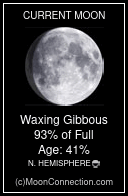Stonehenge
The very word kindles in the imagination visions of robe-clad druids in solemn procession, perhaps singing Celtic chants and bearing flaming torches, gliding slowly toward the center of the megalithic circle to perform seasonal rites honoring the gods and goddesses...
Okay, I'm a romantic dreamer..."the Henge" (as the British call it) lends itself so well to such flights of fancy. However, there is much, much more to
First, a bit of archeological history:
Archaeology: (If this doesn't interest you, feel free to jump ahead to Interpretation.) "At first sight this unique and enigmatic site appears smaller than imagined, but the tallest upright stone is 22 ft. high and another 8 ft. below ground.
The outermost element of the site is the Avenue that runs straight down a gentle slope for a distance of 560 yds. into 
"On the central area of the site there are the stone settings, the sophisticate arrangements that set
"In its complete form the outermost stone setting consisted of a circle of 30 upright sarsens, of which 17 still stand, each weighing about 25 tons. The tops of these uprights were linked by a continuous ring of horizontal sarsen lintels, only a small part of which is now still in position. The stones in the sarsen circle are carefully shaped and the horizontal lintels are jointed together not only by means of simple mortice-and-tenon joints, but they are also locked using what is effectively a dovetail joint. The edges are smoothed into a gentle curve which follows the line of the entire circle.
"The bluestone setting, concentric the outer sarsen circle, consisted originally of about 60 stones but many have fallen, dissolved or been crushed. Inside these two circles lies the sarsen horseshoe, consisted originally of five sarsen trilithons (a Greek word that means three stones), each comprising two uprights and a horizontal lintel. Although now fragmentary, the arrangement shows the careful grading of the five trilithons, the tallest of which is 22 ft. high above ground level. Enfolded within this massive horseshoe, lies a smaller horseshoe arrangement of upright bluestones.
"Current archaeological research shows that this site was constructed and modified on various phases, spanning several centuries:
· "Pre-Stonehenge (9th-8th millennium BC): at least 4 mesolithic pits which originally contained big pine posts, in a line about 200m from the present henge site
· "
· "
· "
· "Bluestones from
· "Sarsen circle and trilithons erected, possibly also a bluestone setting which may have included trilithons, this latter then dismantled
· "Bluestone circle and oval setting
· "Arc of bluestones removed from oval to leave present horseshoe setting
· "Y and Z holes dug, probably for stones which were never erected; during this phase the avenue has also been constructed."
(From "

Interpretation: "Already in the 18th century the British antiquarian William Stukeley had noticed that the horseshoe of great trilithons and the horseshoe of 19 bluestones at
"This discovery has had tremendous impact on how
However, and this is the fascinating part: "Contrary to expectations, the great stone circles and horseshoe arrangements for which Stonehenge is famous are later additions to the monument (mostly Stonehenge III) and are not essential to the lunar and solar calculations.
"Inside the bank were dug 56 holes -- discovered by John Aubrey, and known as the Aubrey Holes -- placed at precisely regular intervals around a concentric circle of about 285 feet in diameter. Archaeological investigations have shown that these holes were not dug to hold upright stones or wooden posts. Besides the Aubrey Holes, of crucial importance are the four Station Stones marked at positions 91, 92, 93, and 94, to form a rectangle that stands in a precise relationship with the centre of the monument and with the Heel Stone. Only two of the Station Stones survive, and one of those may not be original.
"For the archaeoastronomists, the Aubrey Holes served as fixed reference points along a circle, and their number was essential to astronomical calculations. The cycle of the moon, for example, which takes 27.3 days, can be tracked by moving a marker by two holes each day to complete a circuit in 28 days.
"A much longer calculation is to move the marker by three holes per year to complete a full circuit in 18.67 years. In this way, it is argued, it would be possible to keep track of the nodes, points where the paths of the sun and the moon apparently intersect to produce an eclipse. Because the moon slews around in its path, the two nodes move along the path of the sun, a complete circuit of which takes 18.61 years. By means of the markers in the Aubrey Holes and keeping track of the directions of the sun and the moon, the astronomer at










